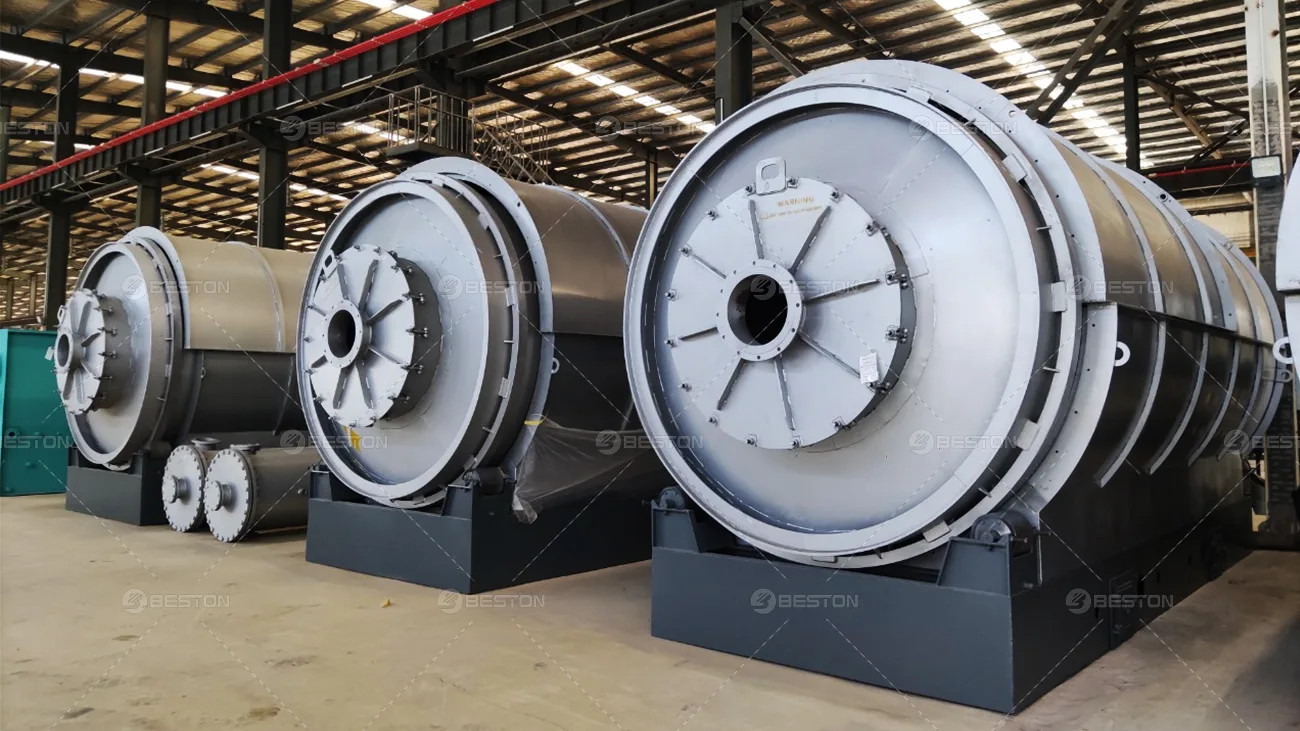Enhancing Oil Yield in Plastic Pyrolysis
The conversion of plastic waste into valuable products through pyrolysis is a promising method for addressing both waste management and energy demands. Among the various by-products produced, oil yield is one of the most important. The quality and quantity of the pyrolysis oil directly impact the financial viability of the operation. By optimizing the pyrolysis process, operators can significantly increase the oil yield, leading to higher profits and greater sustainability. This article outlines several strategies to enhance the oil yield in plastic pyrolysis.
Optimizing Feedstock Selection and Preparation
The quality and composition of the feedstock are critical to maximizing oil output in a plastic pyrolysis machine. Different types of plastics yield varying amounts of oil, with some polymers being more efficient in the process than others.
1. Targeting High-Olefin Plastics
Plastics such as polyethylene (PE), polypropylene (PP), and polystyrene (PS) generally have higher hydrocarbon content, making them more conducive to oil production. Targeting these polymers rather than mixed or low-quality plastics can lead to a higher yield of liquid products. By focusing on these high-olefin plastics, the pyrolysis plant can achieve more efficient oil conversion.
2. Pre-Treatment of Feedstock
Feedstock preparation plays an essential role in enhancing the oil yield. Pre-treating plastic waste by shredding it into smaller pieces increases the surface area available for the pyrolysis process. Smaller feedstock also allows for a more uniform heating process, which helps in achieving a more consistent oil yield. Additionally, the removal of contaminants such as labels, metals, and moisture from plastics further improves the efficiency of the pyrolysis plant.

Control of Pyrolysis Temperature and Time
The operating conditions within the pyrolysis reactor have a direct influence on oil yield. Temperature and residence time are two of the most critical variables that need to be carefully controlled during the pyrolysis process.
1. Optimal Temperature Range
The temperature at which pyrolysis occurs greatly affects the composition of the products. Research suggests that higher temperatures, ranging from 450°C to 550°C, tend to favor the production of oil rather than solid carbon residues or gas. However, temperatures above this range can lead to cracking of the oil into gases, which reduces the oil yield. Therefore, maintaining a precise temperature control within the optimal range is crucial for maximizing the liquid yield.
2. Adjusting Residence Time
The residence time, or the length of time the plastic material is exposed to the high temperature, also influences oil production. Shorter residence times may not allow for complete thermal decomposition of the plastic, resulting in lower oil yield. On the other hand, excessively long residence times can lead to the further breakdown of the oil into gases. The goal is to find a balance, optimizing both time and temperature to ensure maximum oil yield without sacrificing the quality of the product.
Pressure and Reactor Design
In addition to temperature, reactor pressure can also influence oil production in a pyrolysis plant. The design of the reactor itself plays a role in how efficiently heat is transferred and how the material is processed.
1. Pressure Management
Operating the reactor under vacuum or low-pressure conditions has been found to favor the production of more liquid oil and less gas. This is because lower pressure reduces the vaporization of the liquid hydrocarbons into gaseous products. Maintaining a low-pressure environment during the process can enhance oil yield by preventing premature vaporization and ensuring that more of the hydrocarbons are captured as liquid products.
2. Advanced Reactor Design
The design and configuration of the pyrolysis reactor can also impact the efficiency of oil extraction. Reactors that incorporate efficient heat transfer mechanisms, such as rotary kilns or fluidized bed reactors, can improve heat distribution and reduce the energy requirements of the process. These reactors enable better control over temperature fluctuations, enhancing the consistency of the oil yield.
Catalysts for Oil Yield Enhancement
Using catalysts in the pyrolysis process can significantly increase oil output and improve the quality of the oil produced. Catalytic pyrolysis involves the introduction of a catalyst that accelerates the breakdown of plastics into liquid hydrocarbons.
1. Catalytic Materials
Common catalysts used in pyrolysis include zeolites, alumina, and silica-based materials. These catalysts help break down long polymer chains into shorter, more valuable hydrocarbons. The use of catalysts can not only increase the oil yield but also enhance the quality of the bio-oil, making it more suitable for use as a renewable fuel source.
2. Optimization of Catalyst Loading
The amount of catalyst added to the pyrolysis system must be optimized. Too little catalyst may not have a significant impact on the reaction, while too much catalyst could lead to undesirable side reactions, decreasing the overall oil yield. Therefore, testing various catalyst loading levels is essential to find the optimal balance that maximizes oil production while maintaining process efficiency.
Post-Treatment and Oil Refining
Once the oil is produced, it may contain impurities such as water, ash, and heavy hydrocarbons. These impurities can reduce the quality of the oil and make it less suitable for commercial use. Post-treatment processes, such as distillation or vacuum separation, can further enhance the quality of the oil and increase its market value.
1. Distillation
Distillation is a widely used method for separating different fractions of pyrolysis oil based on their boiling points. By separating the lighter fractions (such as gasoline and diesel) from the heavier ones (such as tar and bitumen), distillation helps increase the purity of the oil and optimize its commercial use. The higher the quality of the oil after refinement, the higher the price it can fetch in the market.
2. Removal of Impurities
Implementing effective methods to remove impurities, such as water and ash, from the oil stream can lead to a higher-value product. This step is crucial for ensuring that the oil can be used as a viable fuel or as a feedstock for chemical industries, thus improving the overall profitability of the pyrolysis plant.